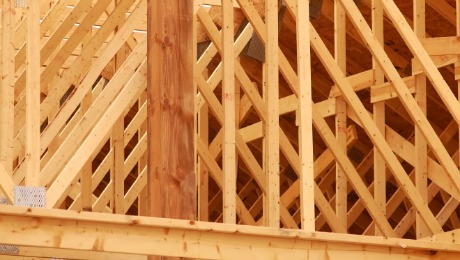Builder Confidence Remains Steady in January

When it comes to gauging the health of the nation’s housing industry, the measure of builder confidence can not be ignored. After all, these are the individuals who are in direct contact with those who are expressing an interest in new construction. That is one reason why the National Association of Home Builders/Wells Fargo Housing Market Index is so closely monitored.
In fact, for about 30 years, the NAHB has been polling its members via a monthly survey. Combined with those results, the HMI is derived. The three main components builders are asked to evaluate are their perceptions regarding current single-family home sales, sales expectations for the coming six months, and prospective buyer traffic. The scores are then tallied and interpreted to compute a seasonally-adjusted index. In terms of the HMI, a score in each category of over 50 reveals that more builders view the situation as favorable.
January marked the third consecutive month that the score for builder confidence for single-family home sales was in the upper 50s. In January it was an impressive 57. Not only was it in the upper 50s, it also remained above the 50 mark for the seventh month in a row. Housing market pros had predicted that January 2015 would start off strong and they were right!
The NAHB’s chairman, Kevin Kelly, noted that, “After seven months above the key 50 benchmark, builder sentiment is reflecting the gradual improvement that is occurring in many markets throughout the nation.”
The agency’s chief economist, David Crowe also acknowledged that, “January’s HMI reading is in line with our forecast as we head into the New Year. Steady economic growth, rising consumer confidence and a growing labor market will help the housing market continue to move forward in 2015.”
Although the confidence level in regard to single-family home sales was certainly positive, how about the other two components that make up the HMI? The score for current sales was 62 and the score for expectations through the coming months was an extremely hopeful 60.
Here’s the breakdown for the regional scores:
- South – 58
- Northeast – 47
- West – 66
- Midwest – 57
Looking ahead…
As prospective new homeowners consider their options for various architectural styles such as, Craftsman, Colonial, Contemporary, Cape Cod or country cottage, the NAHB has issued a statement that its goal is to establish cost-effective energy efficiency for all new construction. Members of the NAHB are urging Congress to put legislation into place that will effectively improve the “development of model building energy codes.” The agency is also actively pursuing legislation that will, “increase transparency in the development of energy codes, ensure that advancements in energy efficiency are cost-effective and support the training of building code officials.” The NAHB has set its goal for this legislation to pass by the end of 2015.
As part of its push to create awareness of the benefits of green building practices and increased energy efficiency in new construction the NAHB has come forward in support of the heightened development of energy codes, that will safeguard that improvements in energy efficiency are cost-effective. The agency also acknowledges that a key component in making this work is to properly educate and train the officials who oversee building code enforcement.
NAHB members are formerly asking Congress to, “help remove barriers to green building and create an environment that encourages home owners to invest in energy efficiency.” Their request ties in with the SAVE Act, which seeks to initiate legislation that would improve the accuracy of mortgage underwriting by evaluating a property’s anticipated savings on energy costs in conjunction with calculating the home’s value and rate of energy efficiency potential.
Subscribe To Our Newsletter
Sign up with your email address to receive news and updates.